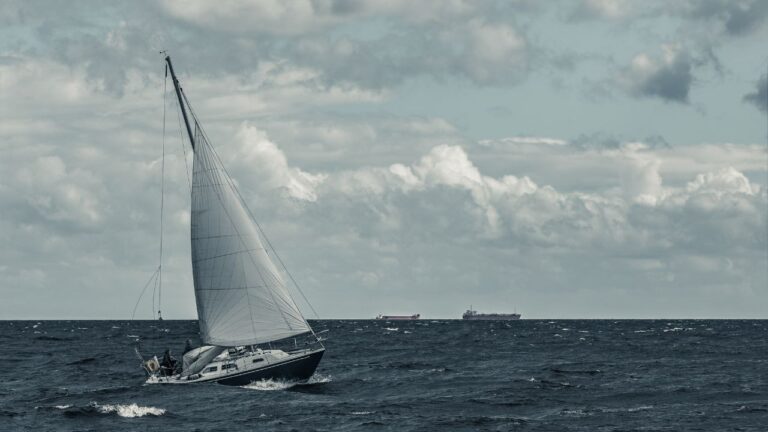The Impact of Weather on Boating: How to Navigate Different Conditions

Boating can be a thrilling and serene experience, but the weather plays a crucial role in determining the safety and enjoyment of any voyage. Understanding how different weather conditions impact boating is essential for all mariners, from seasoned sailors to weekend enthusiasts. This article delves into the effects of various weather patterns on boating and offers tips on how to navigate them safely.
1. Sunny Days: The Double-Edged Sword
Impact: Sunny, clear days are often considered the best for boating, providing excellent visibility and calm waters. However, prolonged exposure to the sun can lead to heat exhaustion, dehydration, and sunburn. Additionally, the glare from the sun can impair visibility, making it harder to spot obstacles or other vessels.
Navigation Tips:
- Sun Protection: Always wear sunscreen, a hat, and sunglasses. Ensure that you have plenty of water on board to stay hydrated.
- Glare Reduction: Use polarized sunglasses and position yourself in a shaded area if possible. Keep a lookout for reflections off the water that might hide potential hazards.
2. Windy Conditions: The Challenge of Choppy Waters
Impact: Wind is one of the most significant factors affecting boating. High winds can create choppy waters, making it difficult to navigate and maintain control of the boat. Small craft are especially vulnerable, and strong winds can even capsize them.
Navigation Tips:
- Check the Forecast: Always check wind speeds before setting out. Avoid boating in winds that exceed your vessel’s capabilities.
- Adjust Your Speed: Slow down to reduce the impact of waves and maintain better control.
- Positioning: Approach waves at an angle rather than head-on to reduce the risk of capsizing.
3. Rain and Fog: Reduced Visibility and Slippery Decks
Impact: Rain and fog significantly reduce visibility, making it difficult to see other boats, buoys, and landmarks. Rain can also make decks slippery, increasing the risk of accidents.
Navigation Tips:
- Use Navigation Aids: Rely on radar, GPS, and other electronic navigation tools to help guide your way in low visibility conditions.
- Slow Down: Reduce speed to give yourself more time to react to any obstacles.
- Deck Safety: Ensure that all passengers have non-slip footwear, and be cautious when moving around the boat.
4. Thunderstorms: A Dangerous Encounter
Impact: Thunderstorms are one of the most dangerous weather conditions for boaters. They can bring high winds, heavy rain, lightning, and even tornadoes. Lightning poses a significant risk, especially on open water, as boats are often the tallest objects around.
Navigation Tips:
- Seek Shelter: At the first sign of a thunderstorm, head to shore or seek shelter in a marina. If this is not possible, move to a low position within the boat, avoiding metal objects and electrical equipment.
- Monitor Weather Reports: Keep an eye on the weather forecast, especially during storm season, and be prepared to cut your trip short if a storm is approaching.
5. Cold Weather Boating: Hypothermia Risks
Impact: Boating in cold weather presents the risk of hypothermia if someone falls overboard or if the boat capsizes. Cold water can quickly sap body heat, leading to a life-threatening situation.
Navigation Tips:
- Wear Appropriate Gear: Dress in layers and wear a life jacket with thermal protection. Consider wearing a dry suit if the water temperature is particularly cold.
- Have a Rescue Plan: Ensure that you have a plan in place for quickly rescuing someone who falls overboard, including the use of lifelines and flotation devices.
6. Calm Waters: The Illusion of Safety
Impact: While calm waters are generally ideal for boating, they can sometimes lull boaters into a false sense of security. Unexpected changes in weather can occur quickly, and boaters may not be prepared to respond.
Navigation Tips:
- Stay Vigilant: Always be aware of your surroundings and keep an eye on the weather, even on the calmest days.
- Be Prepared: Keep safety equipment like life jackets, flares, and communication devices easily accessible.
Weather conditions can change rapidly, and being prepared for different scenarios is crucial for safe boating. Whether you’re navigating through calm waters or battling a sudden storm, understanding the impact of weather on boating and knowing how to respond can make all the difference. Always respect the power of nature, and prioritize safety to ensure that your time on the water is both enjoyable and secure.
Contact Walter Johnson at 239-404-9329 to learn more about Engel & Völkers Yachting or check out our Exclusive Listings.

